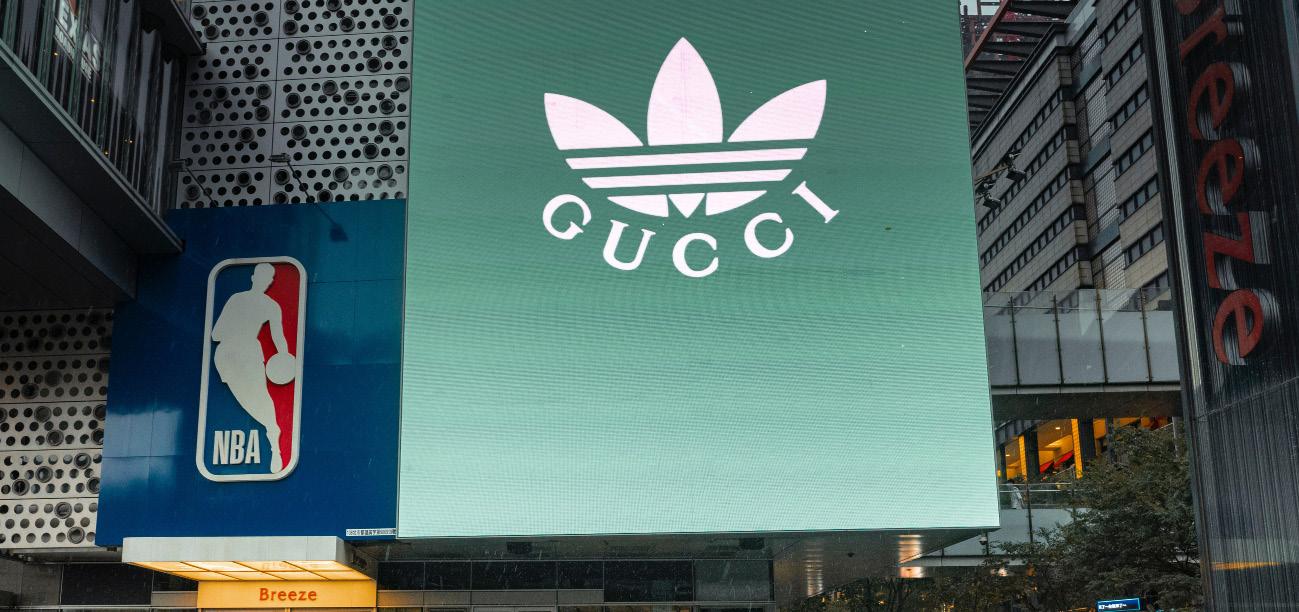
3 minute read
THE COLLAB:
WHAT HAPPENED TO YOUTUBE COLLABORATION CULTURE?

Advertisement
Let me set the scene – its 2013. Chummies Zoella and SprinkleOfGlitter (Louise Pentland) have just left the glistening pebbles of Brighton Beach behind for the biggest event of the annum in the eyes of YouTubers worldwide – VidCon. Dan and Phil are still ‘straight’, violently denying rumours and avoiding the depths of Tumblr where the most horrific of fanfictions lay, instead hosting their weekly BBC Radio show and balancing about five channels altogether. The YouTube boyband has just covered ‘It’s All About You’, and each and every one of your favourites is either releasing a makeup brand or a book. Tanya Burr and Jim Chapman haven’t split up yet and the existence of their dog Martha remains certain.
You’re sat in your room, no troubles in life apart from which tennis skirt you’re going to wear for non-uniform day on Friday. Happy Little Pill by Troye Sivan blasts from your iPhone 4s and on your family laptop, you’re watching the latest Caspar Lee and ThatcherJoe collab. What you don’t realise yet, is that this familiar group of YouTubers who have raised you will soon be strangers, even to each other.
To save us all from tears, I’ll bring the nostalgia-ridden scenario to an end there. YouTube in the early 2010s was an experience unique to us all – still a budding website, where the profession of being a ‘content creator’ or ‘influencer’ raised more eyebrows than sex work (which is usually what it was mistaken for, actually). The thing is, this little group of YouTubers seemed so close to making it massive globally – pulling side projects left, right and centre and attending every event known to man. Then, almost as quickly as it exploded, everything ceased to be as exciting and impressionable as it once was. Here’s the thing – no one is completely sure why. Was it their content that stopped being so endearing? That would explain a lot, however, upon revisiting some of these all- familiar channels (Tyler Oakley, Alfie Deyes, to name just a few extras) it becomes apparent that these people, for the most part, haven’t changed much at all. Looking within, however, it’s likely the fault of us, the viewers, that these people faded so quickly from the limelight.
Most of us being pre-teens at the time of their explosion onto the internet scene, we spent so much time invested in consuming hours of the same content that we almost grew up quicker than any of us would have hoped. From 2015 onwards, these names we all knew too well once again faded into enigmas in topics of conversation, or only mentioned when someone brought them up as a ‘throwback’. Marcus Butler stopped his YouTube channel, Troye Sivan is better known as a singer than his professional beginnings on the site, and Zoella and Alfie (who finally confirmed their romance) now have a child together. Not that I’m biased in any way, but Dan and Phil seemed to be the only ones who still really cared – and remained somewhat relevant – and painfully the same. They embarked on world tours, contin- continued their silly little ‘tags’ and challenges, and live streamed weekly. Was this effective? Somewhat, but the burnout ultimately came faster. Whilst Zoe, Alfie, Louise, in fact the majority of the Brit Crew still create content regularly, DanAndPhilGames abruptly stopped, and Dan stopped uploading content altogether.
Change, a lot of the time, is necessary - even if it is difficult to accept. From 2018 onwards, it really seemed as though YouTube had now become a solo effort for many, with growing popularity given to lone influencers such as James Charles, Shane Dawson, and Emma Chamberlain. It opened up more doors for fresh faces – Antonio Garza’s channel blew up overnight for her dry humour and unique video format, one that didn’t require anyone but her own face to gain a following. Technology had become more accessible now, too – anyone could access a camera and editing software on their own phone, and camera quality had improved so much that an El Gato or Canon Camera was not necessary for success.
Cue the Covid-19 pandemic in 2020. People had no choice but to do things on their own, with social interaction and proximity being against the law to stop the spread of the virus. YouTube began to depend on another platform, Twitch, and creators worked in unison to achieve high levels of entertainment for all kinds of viewers. With people sat at home all day, video games had become much more important, and the likes of Minecraft caused newfound friendships and ‘groups’ – the DreamSMP, Lunch Club, to name just two. From now on, it seems that whether you rather create content with your friends or take the reins of autonomy for your own channel, YouTube is a place for anyone.
Words By: Tegan Davies
Design By: Mia Wilson









